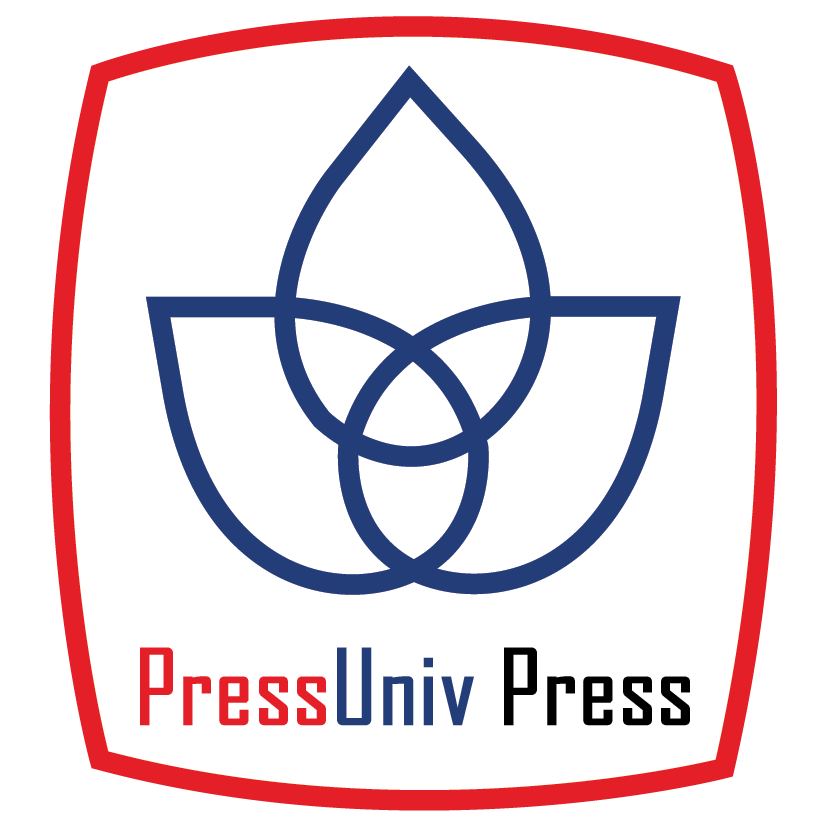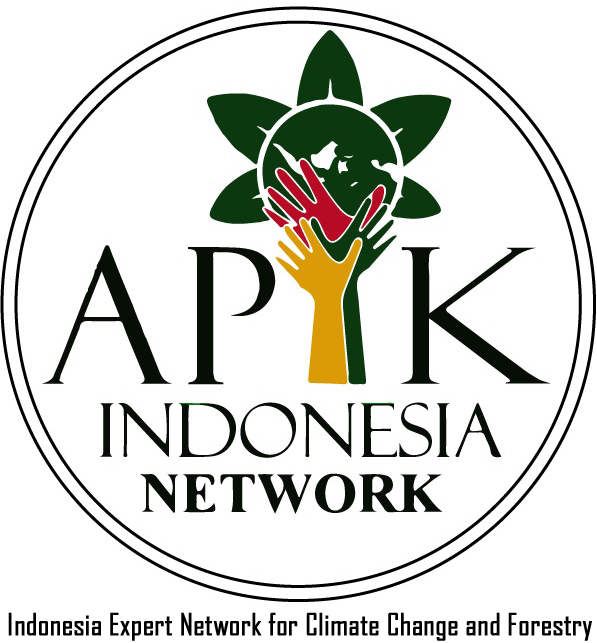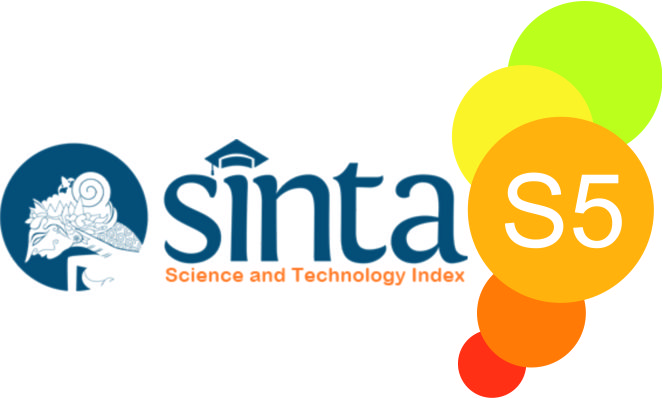Application of sodium hypochlorite (NaOCl) for ammonia removal in wastewater effluent of PT. HS
Abstract
Abstract. PT HS is a world’s leading toy manufacturing company with more than 6,000 workers. Due to the high number of workers in PT. HS, it will impact to domestic activities (toilet discharge). Based on the annual report for wastewater effluent, noted that parameter ammonia from PT HS’s wastewater effluent was exceeding the industrial estate limit which the average of ammonia concentration is 50 mg/L. Whereas, In the industrial estate regulation contain of several standard parameters that must be comply by the company such as ammonia standard which has maximum 10 mg/L for the wastewater effluent. Objectives: The objectives of this experiment are to know the optimum dose of NaOCl 9% on ammonia removal and to know the concentration of residual chlorine after the treatment process. Method and results: This research use the experimental method to get the primary data. After the experiment in the laboratory, the results proved that the sodium hypochlorite exposure reduces ammonia concentration in water samples with 82,2% removal efficiency from 50 mg/L to 8,9 mg/L ammonia concentration reduced with 110 mg/L of NaOCl 9% solution within 30 minutes contact time and it resulted the residual chlorine 0.72 mg/L. Conclusion: The chlorination process was effective to reduce the ammonia concentration. Also, the residual chlorine was still in the standard limit which not exceeds from 1 mg/L. The result also shows that the dose variations of sodium hypochlorite influence ammonia removal efficiencies. Also, mostly the total residual chlorine forecast will increase with the increasing sodium chlorine dose.
Keywords
Full Text:
PDFReferences
Y. Tsuzuki, “Pollutant loads analysis of domestic wastewater and environmental accounting housekeeping (EAH) books of domestic wastewater in drainage areas of inner city rivers in Japan for the purpose of preparing domestic wastewater management plan of the developing countries,” Proceedings of the Symposium on Global Environment, vol. 13, pp. 77–82, 2005.
T. Wikaningrum et al, "Kebijakan Pengelolaan Lingkungan Kawasan Industri Sesuai Proper Klhk Peringkat Hijau (Studi Kasus Di Kawasan Industri Jababeka Bekasi)," Journal of Natural Resources and Environmental Management, vol. 5, no. 2, 2015.
R. Hakiki and T. Wikaningrum, "The Prospect of Digitally Enhanced Colorimetry as An Analytical Method for Water Quality Determination," Indonesian Journal Of Urban And Environmental Technology [Online], 2.2 (2019): 146-163, Web, 14 Dec. 2019.
L. Huang, L. Li, W. Dong, Y. Liu, and H. Hou, “Removal of Ammonia by OH Radical in Aqueous Phase,” Environmental Science & Technology, vol. 42, no. 21, pp. 8070–8075, 2008.
S. Przemysław et al, “Removal of Ammonia from the Municipal Waste Treatment Effluents using Natural Minerals,” Molecules (Basel, Switzerland), vol. 24,20 3633, 9 Oct. 2019.
K. Arumi, “Removal of Ammonia (Nh3) Concentration of Wastewater in The PT. Limanjaya Anugrah Using Breakpoint Chlorination Method at Mixing Treatment Unit,” 2006. [Online]. Available: http://hdl.handle.net/123456789/1541.
L. Qian, “Chemistry of Breakpoint Chlorination,” 1997. Margerum Research. Available: www.chem.purdue.edu/margerum/breakcl2.html.
T. D. Reynolds and P. A. Richards, “Unit operations and processes in environmental engineering,” Amazon, 1996. [Online]. Available: https://www.amazon.com/Operations-Processes-Environmental-Engineering-Second/dp/0534948847. [Accessed: 10-Dec-2019].
R. Handayani, “Evaluation and optimization sewage treatment plant (STP) performance of PT Pacific Paint in ammonia removal,” B.Eng. thesis, Dept. Environ. Eng., University of Indonesia., Depok, Indonesia, 2012.
R. Ratnawati dan Sugit, “Proses Desinfeksi pada Pengelolaan Air limbah Domestik menjadi Air Bersih sebagai Air Baku Air Minum,” Jurnal Teknik Waktu, Vol. 11, No 02, ISSN 1412-1867, 2013.
M. Aminullah, “Keefektifan Dosis Kaporit [Ca(OCl)2] dalam menurunkan Kadar Amoniak (NH3) pada Limbah Cair Rumah Sakit PKU Muhammadiyah Surakarta,” Publikasi Ilmiah, 1–13. 2015.
M. R. Shovitri and M. I. Nurhatika, “PENGARUH BREAKPOINT CHLORINATION (BPC) TERHADAP JUMLAH BAKTERI KOLIFORM DARI LIMBAH CAIR RUMAH SAKIT UMUM DAERAH SIDOARJO,” B.Eng. Undergraduate Thesis, Biology, RSBi 628.166 2 Ros p, 2010.
Peraturan Menteri Kesehatan Republik Indonesia Nomor 32 Tahun 2017 Tentang Standar Baku Mutu Kesehatan Lingkungan Dan Persyaratan Kesehatan Air Untuk Keperluan Higiene Sanitasi, Kolam Renang, Solus Per Aqua, Dan Pemandian Umum.
T. A. Pressley, D. F. Bishop, and S. G. Roan, "Ammonia- Nitrogen Removal by Breakpoint Chlorination," Env. Sci. Tech., 6 (7): 622, 1972.
B. A. Matthew, “Breakpoint Chlorination as an Alternate Means of Ammonia-Nitrogen Removal at a Water Reclamation Plant,” Northern Virginia Center, FallsChurch, Virginia, 1999.
DOI: http://dx.doi.org/10.33021/jenv.v5i2.930
Copyright (c) 2020 Hiqmatus Sholichah

This work is licensed under a Creative Commons Attribution-ShareAlike 4.0 International License.
Journal of Environmental Engineering and Waste Management Published by PresUniv Press, in collaboration with IESA and APIK Indonesia Network




